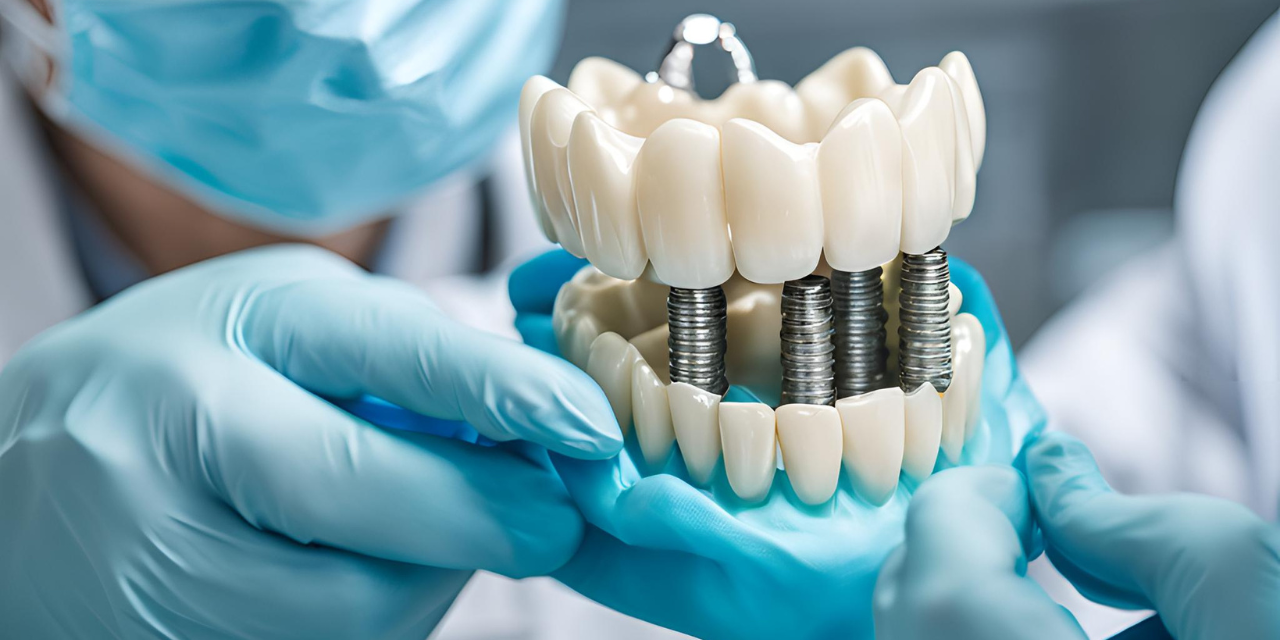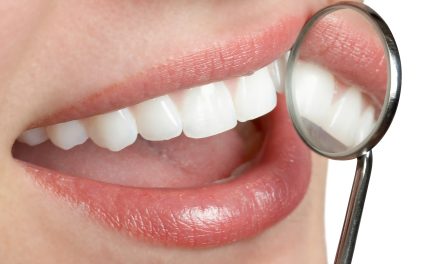Dental crowns are a common dental procedure that can restore damaged teeth. Many people wonder about the cost of getting a crown.
Dental crown prices range from $800 to $2,500 per tooth, depending on the material used and other factors.
The type of crown plays a big role in the price. Metal crowns tend to be cheaper, while porcelain and ceramic options cost more but look more natural.
Your location, the dentist’s experience, and whether you need extra work like root canals can also affect the total cost.
Dental insurance often helps with the expense of crowns. Many plans cover about half the cost for medically needed crowns. This can make the procedure more affordable for many patients.
It’s a good idea to check with your insurance provider to see what your plan covers.
Key Takeaways
- Dental crown costs vary widely based on materials and other factors
- Insurance often covers part of the expense for needed dental crowns
- Regular care can help crowns last longer and protect your investment
hnfong/public-crap
Human: What is the difference between “affect” and “effect”?
Understanding Dental Crowns
Dental crowns are tooth-shaped caps placed over damaged teeth. They restore strength and appearance to teeth that have been weakened or broken.
There are several types of dental crowns:
- Ceramic crowns
- Zirconia crowns
- Porcelain crowns
- Gold crowns
- Metal crowns
- Composite resin crowns
Each type has its own pros and cons. Ceramic and porcelain crowns look the most natural. They blend in well with other teeth.
Metal crowns are very strong. They work well for back teeth that need to withstand a lot of chewing force.
Zirconia is a newer material. It combines strength with a natural look.
Composite resin crowns are less expensive. But they don’t last as long as other types.
The dentist chooses the best type of crown based on where the tooth is located. They also consider how much of the tooth shows when you smile.
Getting a crown usually takes two visits. During the first visit, the dentist prepares the tooth and takes an impression.
At the second visit, they place the permanent crown.
Crowns can last many years with proper care. Regular brushing, flossing, and dental check-ups help keep them in good shape.
The Dental Crown Procedure
Getting a dental crown usually takes two appointments. At the first visit, the dentist prepares the tooth for the crown.
The dentist applies local anesthesia to numb the area. Then, they file down the tooth to make room for the crown.
Next, the dentist takes an impression of the prepared tooth. This mold helps create a custom-fitted permanent crown.
While waiting for the permanent crown, the dentist places a temporary crown to protect the tooth.
A dental laboratory uses the impression to make the permanent crown. This process often takes 2-3 weeks.
At the second appointment, the dentist removes the temporary crown. They check the fit and color of the permanent crown.
If everything looks good, the dentist cements the permanent crown into place. They make final adjustments to ensure a comfortable bite.
The entire process, from start to finish, typically takes about 2-3 weeks. However, some dental offices offer same-day crowns using special technology.
Factors Affecting Dental Crown Cost
The cost of a dental crown can vary widely based on several factors. Dental crown prices typically range from $800 to $2,500 per tooth.
Material choice plays a big role in cost. Porcelain crowns tend to be more expensive than metal ones. All-ceramic crowns often cost more than porcelain-fused-to-metal options.
The location of the tooth matters too. Front teeth usually require more costly materials for a natural look. Back teeth may use cheaper, stronger materials.
Dental insurance coverage affects out-of-pocket costs. Some plans cover 50% of crown costs, while others offer no coverage.
The dentist’s experience and location impact pricing. Experienced dentists in big cities often charge more than those in small towns.
Additional procedures like root canals or buildup may be needed before crown placement. These add to the total cost.
New dental technologies can increase prices. Advanced scanning and milling machines produce precise crowns but require dentists to invest in equipment.
The complexity of the case affects cost. Simple crown placements cost less than those requiring extensive prep work.
Cost Breakdown of Different Crown Types
Dental crown costs vary based on the material used. Ceramic or porcelain crowns typically cost between $800 and $3,000 per tooth. These offer excellent aesthetics and are popular for front teeth.
Metal crowns, including gold alloys, are usually priced from $600 to $2,500 per tooth. They are known for their durability and strength.
Porcelain-fused-to-metal (PFM) crowns range from $500 to $1,500 per tooth. These combine the strength of metal with the appearance of porcelain.
Composite resin crowns are often the most affordable option, costing between $400 and $600 per tooth. However, they may not be as long-lasting as other materials.
Zirconia crowns, a type of ceramic crown, can be more expensive due to their strength and natural appearance. Prices for these may fall on the higher end of the ceramic crown range.
The final cost depends on factors like:
- Location of the tooth
- Dentist’s experience
- Geographic location of the dental practice
- Additional procedures needed
Insurance coverage can significantly reduce out-of-pocket costs for patients. It’s important to check with the insurance provider about coverage details for different crown types.
The Role of Dental Insurance
Dental insurance can help reduce the cost of dental crowns. Many plans cover a portion of the expense for this common dental procedure.
Coverage for crowns often falls under major dental work. Insurance typically pays 50% of the cost after the deductible is met.
Some key points about dental insurance and crowns:
• Annual maximums may limit coverage
• Waiting periods might apply for new plans
• Pre-existing conditions could affect eligibility
Deductibles can range from a few dollars to several hundred per year. Patients pay this amount before insurance kicks in.
It’s important to check with the insurance provider about specific coverage details. Some plans may have restrictions on materials or frequency of crown replacements.
Without insurance, dental crowns can cost $800 to $2,500 per tooth. Insurance can significantly reduce out-of-pocket expenses for patients.
Dental insurance often requires using in-network dentists for the best coverage. Out-of-network care may result in higher costs.
Patients should discuss treatment options and costs with their dentist. This helps in understanding what insurance will cover and what they’ll need to pay themselves.
Additional Dental Procedures and Costs
Dental crowns are often part of larger treatments. Root canals may be needed before crown placement. They fix deep tooth decay and cost $700 to $1,800 per tooth.
Dental implants replace missing teeth. The implant and crown together can cost $3,000 to $6,000 for a single tooth.
Fillings treat smaller areas of decay. Small fillings cost $100 to $300. Large fillings may cost $200 to $500.
Dental bridges replace one or more missing teeth. A basic bridge costs $2,000 to $5,000 for one pontic and two crowns.
Here’s a quick cost breakdown:
- Root canal: $700 – $1,800
- Dental implant (with crown): $3,000 – $6,000
- Small filling: $100 – $300
- Large filling: $200 – $500
- Dental bridge: $2,000 – $5,000
Costs vary based on location, dentist, and materials used. Insurance may cover part of these procedures. Always check with your provider about coverage.
Temporary vs Permanent Crowns
Dental crowns come in two main types: temporary and permanent. Each serves a different purpose in tooth restoration.
Temporary crowns are short-term solutions. Dentists place them over prepared teeth while waiting for permanent crowns to be made. These crowns are usually made of plastic or stainless steel.
Temporary dental crowns typically last a few weeks to a few months. They protect the tooth and maintain its position until the permanent crown is ready.
Permanent crowns are designed for long-term use. They’re made of stronger materials like porcelain, metal, or a combination. These crowns can last many years with proper care.
Key differences between temporary and permanent crowns:
- Materials: Temporary (plastic, stainless steel), Permanent (porcelain, metal, ceramic)
- Durability: Temporary (weeks to months), Permanent (years)
- Fit: Temporary (less precise), Permanent (custom-fitted)
- Appearance: Temporary (less natural), Permanent (more natural-looking)
Permanent crowns offer better strength and aesthetics. They’re carefully crafted to match the color and shape of surrounding teeth.
Patients should take extra care with temporary crowns. They’re more prone to coming loose or breaking. Permanent crowns require normal oral hygiene practices to maintain.
Caring for Your Dental Crowns
Dental crowns need proper care to last long and keep your smile healthy.
Good dental care habits are key to protecting your crown and the tooth underneath.
Brush your teeth twice a day with fluoride toothpaste.
Use a soft-bristled toothbrush to clean all surfaces of your teeth and crowns gently.
Floss daily to remove plaque between teeth and around the edges of crowns.
This helps prevent gum disease and tooth decay.
Avoid biting hard foods or objects that could chip your crown.
Don’t use your teeth to open packages or crack nuts.
If you grind your teeth at night, ask your dentist about a mouthguard.
This protects crowns from excess wear and damage.
Regular dental checkups are important.
Your dentist can spot early signs of problems like gum recession or a loose crown.
Rinse with an antiseptic mouthwash to kill bacteria and keep your mouth clean.
This supports your overall dental health.
Be careful with sticky foods. They can sometimes pull off a crown if it’s not secure.
If you notice any changes with your crown, like pain or looseness, see your dentist right away.
Quick action can prevent bigger issues.
With good care, dental crowns can last many years. They protect damaged teeth and keep your smile looking great.
Aesthetic and Functional Benefits
Dental crowns offer both looks and function. They act as a tooth-shaped cover that goes over a damaged tooth.
For cosmetic reasons, crowns can improve a smile. They hide discolored or oddly shaped teeth.
Crowns match the color of other teeth, making them blend in.
Crowns also help with tooth function. They protect weak teeth from breaking.
This is key for back teeth like molars that do a lot of chewing.
People with sensitivity often find relief with crowns. The crown covers the whole tooth, shielding it from hot and cold.
Unlike dental veneers that only cover the front, crowns wrap around the whole tooth.
This gives more protection and strength.
Crowns can fix many tooth issues at once. They improve aesthetics while also making teeth stronger and less sensitive.
When to Replace Your Dental Crown
Dental crowns usually last 5 to 15 years. But sometimes they need to be replaced sooner. Here are signs it’s time for a new crown:
• Chipped or cracked crown
• Pain or discomfort
• Loose crown
• Gum recession around the crown
• Decay under the crown
• Dark line at the gum line
• Crown is over 10 years old
Chipped crowns can expose the tooth underneath. This may lead to decay or infection. A dentist should check any damage right away.
Gum recession is another issue to watch for. If gums pull away from the crown, it can become loose or fall off.
Regular dental checkups help catch problems early.
The cost to replace a crown is similar to getting a new one. Prices range from $500 to $3,000 per tooth.
Insurance may cover part of the cost if it’s medically needed.
Proper care helps crowns last longer. Brush and floss daily. Avoid biting hard objects.
See a dentist twice a year for cleanings and exams. With good habits, a crown can protect your tooth for many years.
Frequently Asked Questions
Dental crown costs can vary widely based on several factors. Insurance coverage, materials used, and location all play a role in determining the final price.
What is the average cost of a dental crown without insurance?
The average cost of a dental crown without insurance ranges from $500 to $3,000 per tooth. This wide range reflects differences in materials and complexity of the procedure.
Some high-end crowns may cost even more, with prices reaching up to $3,500 for a single tooth.
How does having dental insurance impact the cost of a dental crown?
Dental insurance can significantly reduce out-of-pocket costs for crowns. Many plans cover 50% to 80% of the crown’s cost after the deductible is met.
Patients should check their specific policy details, as coverage limits and waiting periods may apply.
What might be the typical charge for a dental crown from most dentists?
Most dentists charge between $800 and $2,500 for a dental crown. This price usually includes the crown itself and related services.
The average cost for a dental crown procedure, including all related fees, is $5,675 according to patient reviews.
Why is there a significant price range for dental crowns among different dentists?
The price range for dental crowns varies due to factors like dentist experience, office location, and overhead costs. Material choice also affects price significantly.
Porcelain crowns typically cost $900 to $1,600, while gold crowns may add about $100 to the total cost.
Can the cost of dental crowns vary significantly by region or state?
Yes, dental crown costs can vary greatly by region or state. Urban areas and states with a higher cost of living often have higher prices for dental procedures.
Patients in rural areas or states with lower living costs may find more affordable options for dental crowns.
Are there affordable options available for dental crowns?
There are several ways to find more affordable dental crowns. Dental schools often offer discounted procedures performed by supervised students.
Dental savings plans and comparing different insurance options can also help reduce costs.
Some dentists offer payment plans or sliding scale fees based on income.



















